#merlin the enchanter
Explore tagged Tumblr posts
Text
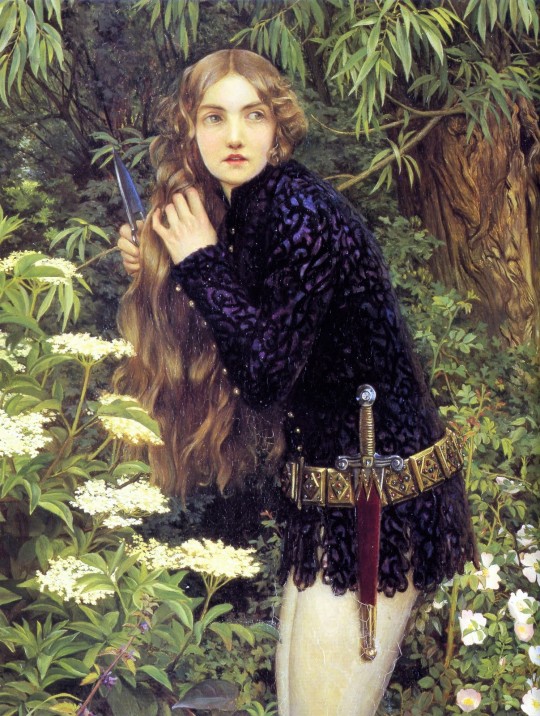



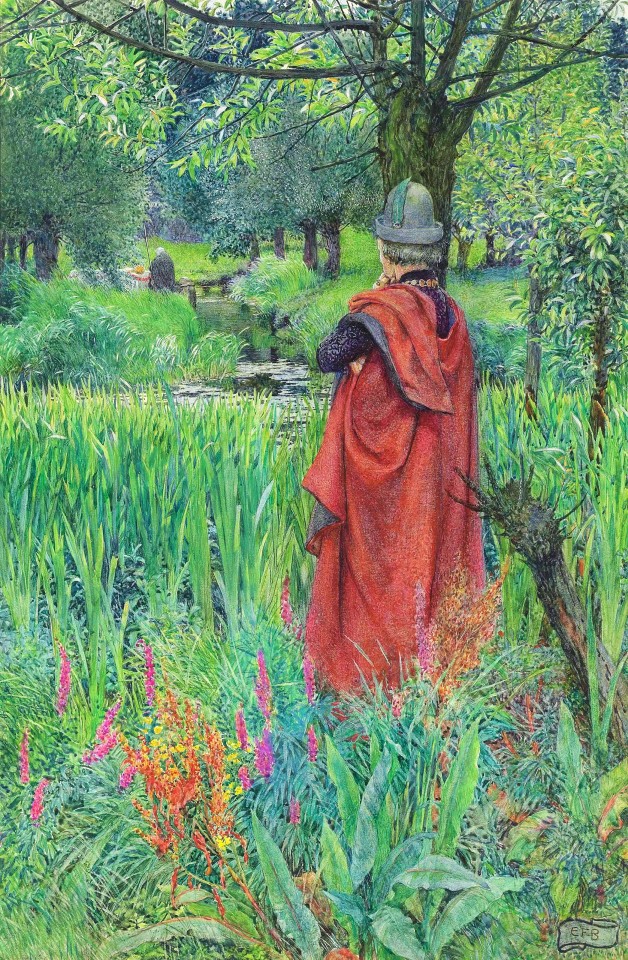
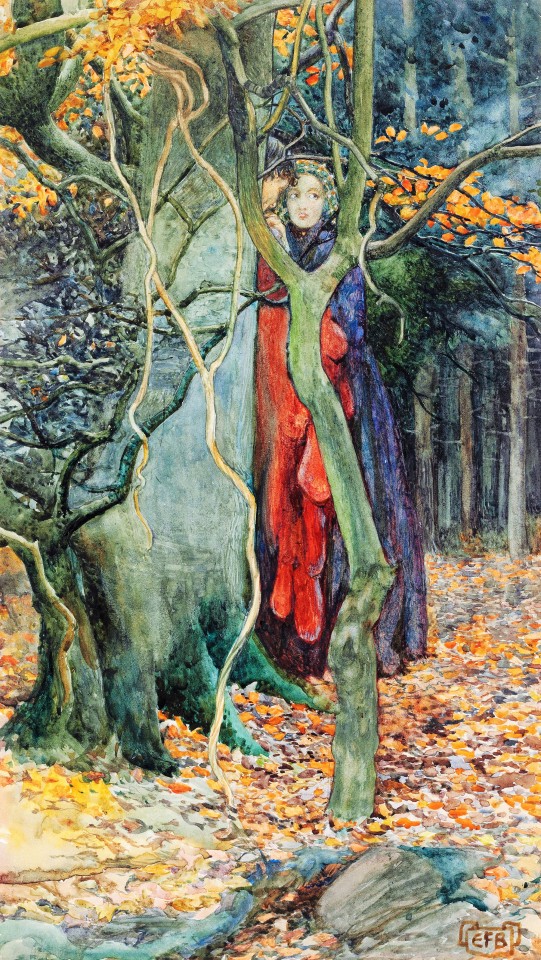
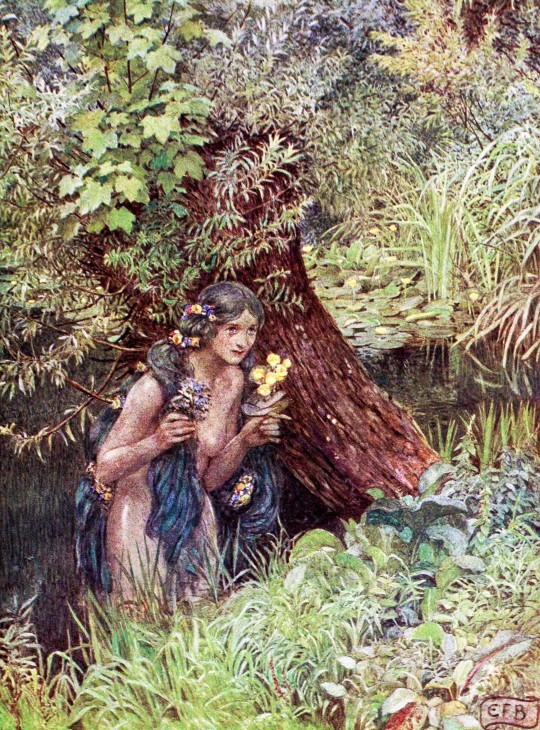


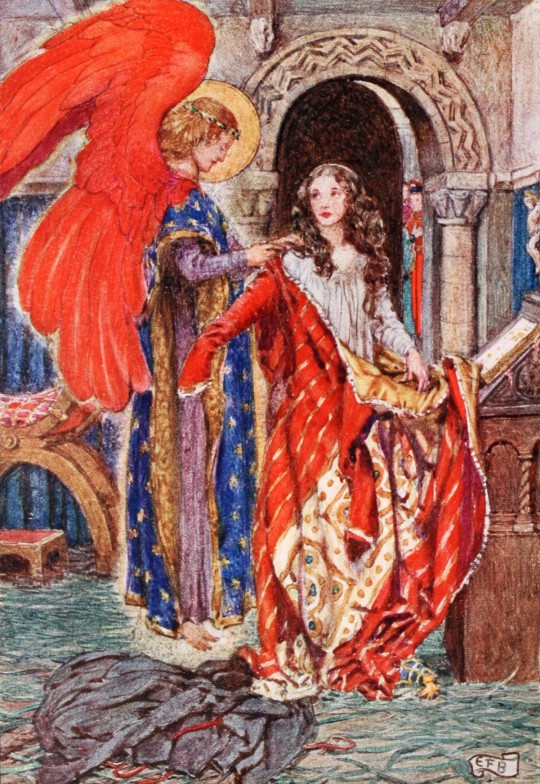

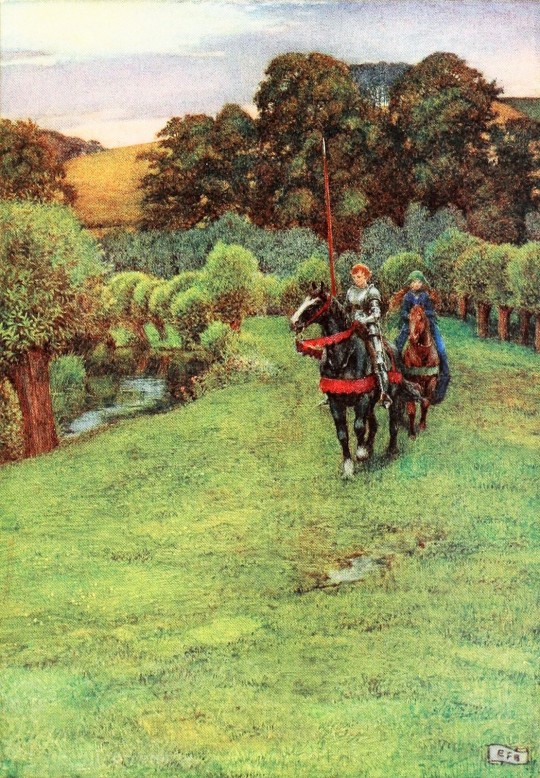
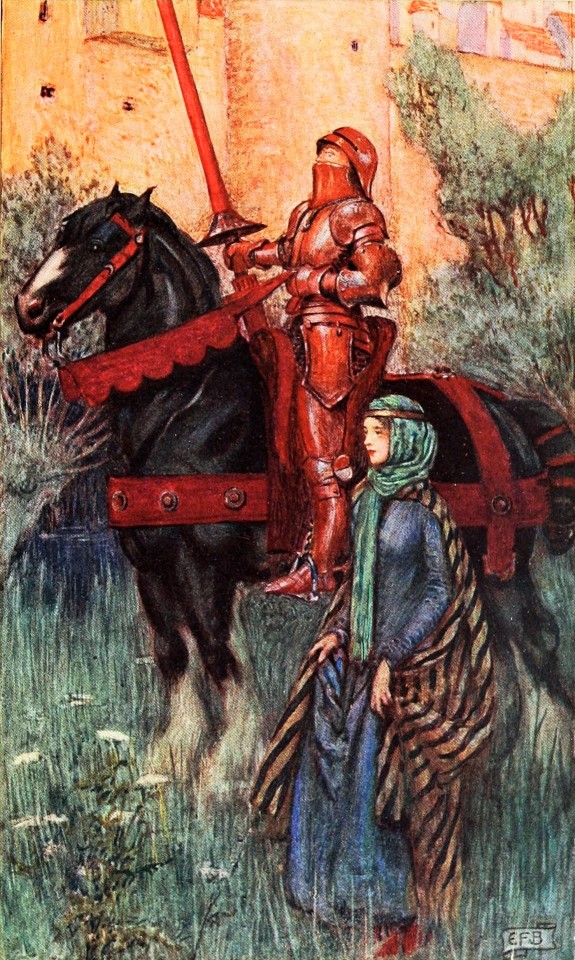
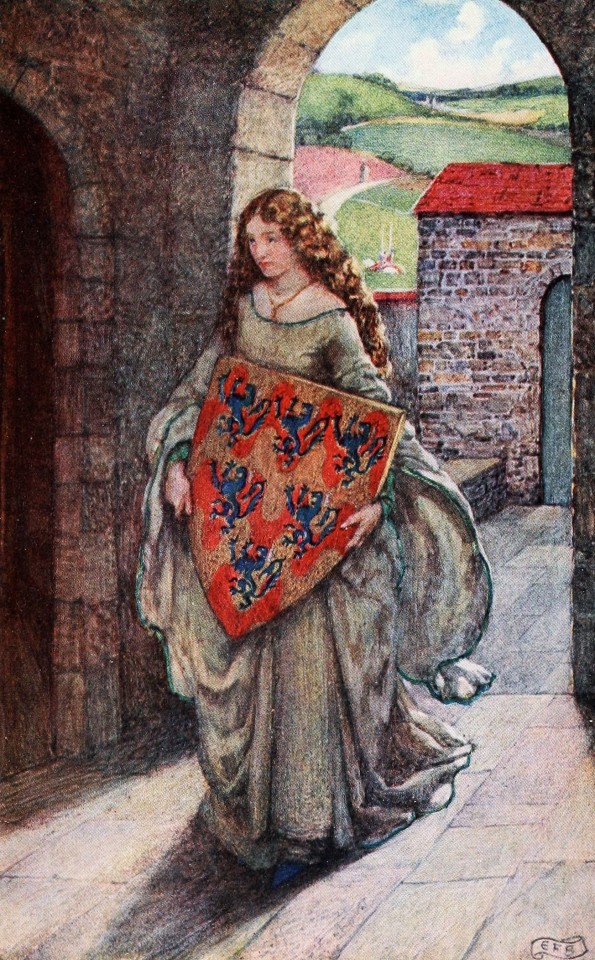
art by Eleanor Fortescue-Brickdale (1910s)
#eleanor fortescue-brickdale#arthurian legend#medieval art#book illustrations#20th century paintings#merlin the enchanter#queen guinevere#idylls of the king#kate barlass#golden book of famous women#the book of old english songs and ballads#1910s
4K notes
·
View notes
Text
Arthurian myth: Merlin (1)
Loosely translated from the article "Merlin" of the Dictionary of literary myths, under the direction of Pierre Brunet.
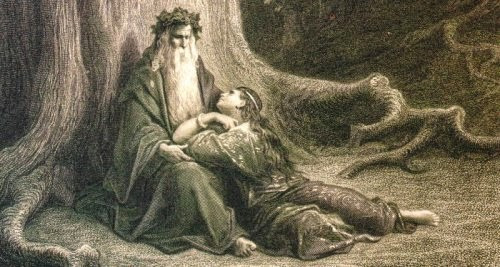
The literary fortune of Merlin was often dependent of the Arthurian literature. However, through its various resonances, the character gained its own seduction and its own popularity that allowed him to return outside of a medieval setting, gaining the status of an autonomous literary myth. He was at first the prophet of the Briton revenge, the one who had initiated the Round Table and who had inspired the errant-knighthood. Through his unique position between good and evil (he is born of a devil and a virgin), between life and death (his paradoxical survival within a “prison of air” or his vault), he embodies in modern times the enigma of History and of the future. Finally, he is the enchanter: causing or suffering many metamorphoses, he is a mythical builder and engineer, and sometimes a warlock/sorcerer. Merlin stays one of the prime heroes of the world of magic.

I/ Origins
The name and the character of Merlin appear for the first time within two Latin-written works of the second quarter of the 12th century, by the Welsh cleric Geoffroy of Monmouth: the “Historia Regum Britanniae” (1136) and the “Vita Merlini” (1148).
Nothing allows us to claim that a character named Merlin (Myrddin in Welsh) existed before these works. The very name of Merlin might have been an invention of Geoffroy, based on the name of the city of Kaermyrddin (today’s Carmarthen). It is also possible that Geoffroy used the phonetic similarity between the city and a “Merlin(us)” which belonged to the Armorican tradition (or more largely the continental one). However, Geoffroy of Monmouth did not start out of nothing. In the middle of the 12th century, Robert of Torigny, library of the abbey of Bec, claimed that two Merlin existed: a Merlin Ambroise/Ambrose (Ambrosius Merlinus) and a Merlin Sylvestre/Sylvester (Merlinus Silvester). This opinion was renewed thirty years later by Giraud of Cambria. Thes two names seem to correspond to two different traditions that Geoffroy joined:
1) “Merlin Ambrose” designates a character of the 6th century named Ambrosius. Gildas (in his “De Excidio et conquest Britanniae) made him the descendant of a Roman consulate family. Nennius( “Historia Britonum” presented him as a child born without a father, and whose mother had sex with an incubus – a tradition maintained by posterior authors. Nennius also provided the motif of the child revealing to the king Guorthigirn (Vortigern) the existence of two underground dragons preventing the building of his citadel. Discovered by the agents of the king at Kaermyrddin, the young Ambrosius interpreted the battle of the monsters as the omen of the long battles between the Briton and the Saxon. When Geoffroy retells this scene, he explicitly identifies Merln to this Ambrosius (“Merlinus, qui et Ambrosius dicebatur”).
2) “Merlin Sylvester” appears mainly in the “Vita Merlini”, and he seems to be the heir of older Celtic traditions. These traditions, shared by both Scotland and Ireland, depict a prince who lost his sanity and ran away into the forest, living there a wild existence while gaining supernatural powers. In Scotland it is Lailoken, known through the “Life of saint Kentigern”: on the day of the battle of Arfderydd (located by the “Cambriae Annals” at 573), this character, companion of the king Rodarch, heard a celestial voice condemning him to only have interactions with wild beasts [Translator’s note: The expression in French here is unclear if it speaks of human interactions or having sex, and I unfortunately can’t check the original Life of saint Kentigern right now]. Several predictions were attributed to him, predictions that the “Vita Merlini” places within Merlin’s mouth. Another incarnation of the “Merlin Sylvester” can be find back as early as the 8th century: in Ireland, the legendary king Suibne, turned mad after the battle of Moira, lived in trees (from which he ended up flying away), and shared similar traits with Lailoken. Similarly, in the Armorique there was the prophet Guinglaff, known through a verse-work of the 15th century “Dialogue entre le Roi Arthur et Guinglaff”.

The link between Merlin and those “wild men” becomes even more apparent thanks to several Welsh poems bearing the name “Myrddin”. Three of them belong to the “Black book of Carmarthen” (Welsh manuscript of the end of the 12th century) : The Apple-Trees (Afallenau), the Songs of the Pigs (Hoianau) and the Dialogue between Merlin and Taliesin (Ymddiddan Myrddin a Thaliesin). If the prophetic passages of these texts cannot be older than the Normand invasion, several lines where the bard talks to the trees and animals of the Caledonian forest (especially his pet-boar), complaining about his loneliness and his sorrow, could be the remains of a poem between 850 and 1050, which could be the oldest record of the Merlin legend.
Despite these many obscure origins, it seems that even before the publication of the “Historia Regum Britanniae” Merlin had awakened a certain interest within Geoffroy’s entourage, since Geoffroy decides to publish in 1134, due to the demands of several people including the bishop of Lincoln, a fragment of an unfinished work of his: the “Prophetiae Merlini”. Inspired by the Books of the Sybil, by the Apocalypse and by the prophetic imagery of Celtic and Germanic tribes, these “Prophecies”, that Geoffroy claimed to have translated from the language of the Briton, is first a record of several events that happened in Great-Britain since the Saxon invasion until the reign of Henry the First. Then, they announce in an obscure fashion the revenge of the Briton, and a series of disasters prefacing the end of the world. This text was a huge success: until the end of the Middle-Ages, these “Prophecies” were commented and quoted as equals to the holy Christian books. Alain of Lille, the “Universal Doctor”, wrote a commentary of the Prophecies in seven books. Merlin, first the great prophet of Wales, then of Scotland, was adopted in the 14th century by the England, which completely forgot the anti-Saxon origins of the character, and took the habit of beginning almost every speech by quoting a Prophecy of Merlin.
The ”Historia Regum Britanniae”, after the story of the two underground dragons and the text of the Prophecies, attributes to Merlin the building of Stonehenge, in the memory of Briton princes treacherously killed. Finally, it tells of how the prophet gave to the king Uter Pendragon magical potions that gave him the appearance of the husband of the duchess Ingern. A trick that allow the birth of the future king Arthur. As early as this first work, Merlin appears at the same time as a prophet and a wizard: a character claims that no one can rival with him when it comes to predicting the future, or accomplish complex machinations (“sive in futuris dicendis, sive in operationibus machinandis).
The ”Vita Merlini”, told in verse, completes Merlin’s biography by telling adventures of a very different tonality. Seer and king in the south of Wales, Merlin became mad after a deadly battle, and lived in the woods like a wild beast. Only the music of a zither can appease him. Led to the court of king Rodarch, chained in order to be kept there, he proves his gift of second sight throughout several “guessing scenes”. Before returning to the woods, he agrees to letting his wife Guendoloena marry again. However, on the day of the wedding, he appears with a horde of wild beasts, riding a stag. Ripping one of the antlers of his ride, he uses it to break the head of Guendoloena’s new husband. The rest of the text depicts Merlin as being saved by his sister Ganieda: he performs a series of astronomical observations and makes prophecies about the future of Britain. His disciple Thelgesin (identified with the Welsh bard Taliesin), back from the Armorique, joins him and they talk lengthily about nature. Finally, Merlin regains his sanity thanks to the water of a stream that just appeared, but he refuses to rule again and stays faithful to the forest.
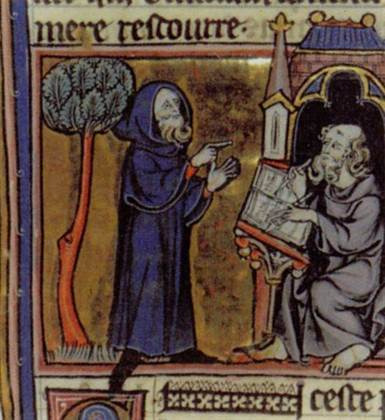
27 notes
·
View notes
Text
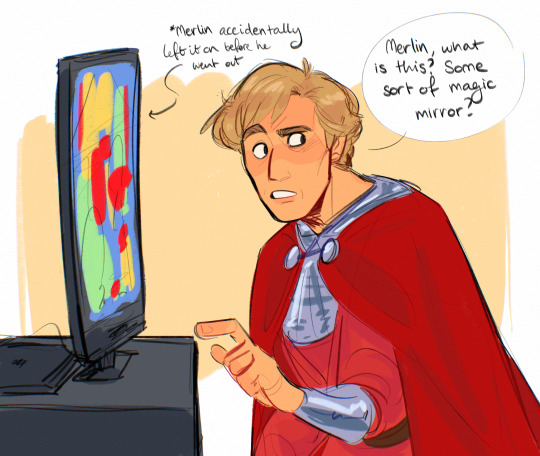


This trope would be so funny for them
#enchanted kind of#or that one that’s the Christmas one is it called Christmas Knight?#maybe I’ll have to rewatch that one just for the content#it was super cheesy and Netflix-y but like maybe that’s what I need right now#also Arthur would absolutely stab a bus with his sword#my art#bbc merlin#merlin#merlin emrys#arthur pendragon#merthur
9K notes
·
View notes
Text
Arthur: I’m in love with Gwen!
Uther, who thought Arthur and Merlin were in love this whole time:
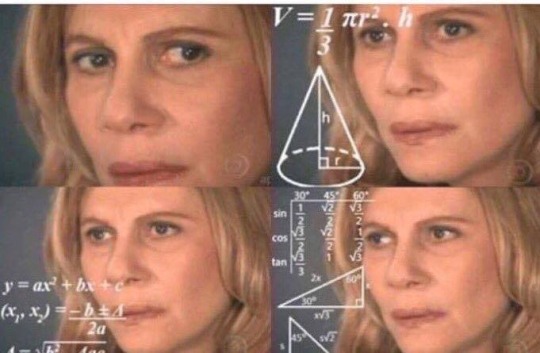
#merthur#bbc merlin#arthur pendragon#uther pendragon#Merlin#someone has probably already made this joke#it’s a joke#but also Uther has witnessed this bond between Merlin and Arthur more than he’s probably seen Arthur express love for a girl#he legitimately thought Arthur was enchanted bcus it was so out of character for Arthur#as far as Uther knew#the rest is fanon but it’s still funny as hell
1K notes
·
View notes
Text
Merlin (who makes dramatic declarations of loyalty completely off hand like he doesn't realize at all how intense his words are): You're my destiny. Always have been.
Arthur (blushing, spluttering, pretty sure hes just heard the romantic declaration he's dreamed of since childhood for which nothing on earth has prepared him for): oh okay
Anyway Arthur beats himself up over it later and is completely convinced that Merlin must feel heartbroken bc obvi his lackluster response must seem like a rejection Que Arthurs increasingly ridiculous courting attempts as he tries to show his feelings with actions meanwhile Merlin is confusion but decides to enjoy his new privileges If it is some kind of enchantment it's better if he sticks close to Arthur until he figures it out anyway, right?
#theres nothing to figure out#this somehow gets drawn out for years#until after arthur is king#and he feels that theyve been courting long enough#he finally proposes#then the bubble bursts#merlin: so the nature of the spell finally reveals itself#arthur: W H A T#arthur: are you truly an idiot? you think ive been enchanted for 5 years and it didnt show until now#merlin is still working his way through researching delayed love spells when hes shuffled off to the great hall in fancy robes#he doesn't realize arthur isnt enchanted until theyve been married for three years#merlin#arthur pendragon#bbc merlin#merthur
700 notes
·
View notes
Text
I love the idea of merlin being like a crow and constantly looking for shiny things, and eventually, he starts giving some of his stuff to Arthur, and Arthur is just so fucking confused on why his servant keep handing him shiny rocks with the biggest stupidest grin.
#i love crow merlin#especially after the magic reveal#amd merlin is trying to give him a shiny rock#and arthur is like “DID YOU ENCHANT THIS?”#and merlin is like “no i just thought it was shiny😢😭”#and arthur instantly feels bad#arthur pendragon#merlin#bbc merlin#merthur
1K notes
·
View notes
Text
“But we need to find you some kind of disguise, you’re too conspicuous in those clothes.”
“Whatever you say, I’m entirely in your hands.”
Okay.
This is their reaction after, btw.
#very heterosexual of them#i appreciate they kept this part in because it’s one of those rare ones where they actually act like two heterosexual men 🥰#…#right????#don’t you think so????#let’s take into consideration that it’s the first time someone notices that maybe going around in full armour and in a camelot red cape#isn’t the best way to not get caught by bandits😭#merthur#bbc merlin#merlin#arthur pendragon#merlin bbc#merlin x arthur#bbc merlin scene#episode 4x12#merlin tv#don’t come at me with ‘oh but arthur was under some sort of enchantment!’#let me live my gay life#with all due respect#and also it was just to make arthur more pliant#so it doesnt mean that’s not what he actually meant😭#it’s what he meant#he just would never dare to say it aloud💀#especially to merlin
410 notes
·
View notes
Text
I feel like if Arthur came back and once things had finally settled, he would have been a complete adrenaline junkie. Like that man went from was fighting for his life every other weekday to all the comforts of 21st century life. Sure, he would still love to laze around, but he would get so restless after a while and end up dragging Merlin to go bungee jumping or some shit and end up giving him an actual heart attack every time.
#Merlin did not wait 1500 years just for his bf to kill himself bungee jumping#The amount of grey hairs he would get watching Arthur plummet out of an airplane#Who are we kidding#he would have enchanted the crap out of that parachute#bbc merlin#arthur pendragon#merlin emrys#merthur
341 notes
·
View notes
Text
It’s the fact that when enchanted!Merlin calls Gwaine filthy, instead of a hands-out, “What the hell, man?” he just turns into a kicked puppy.
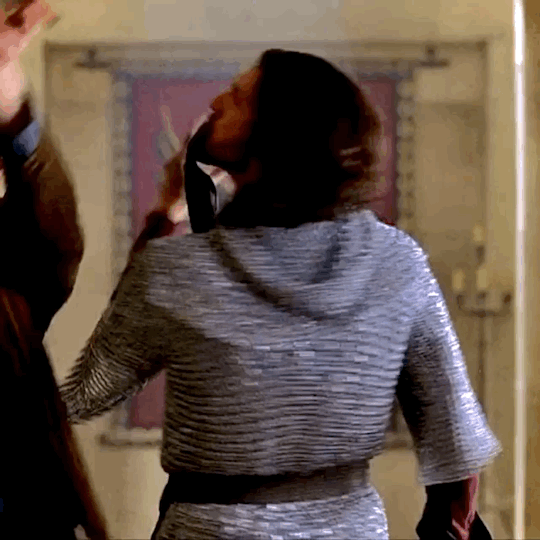

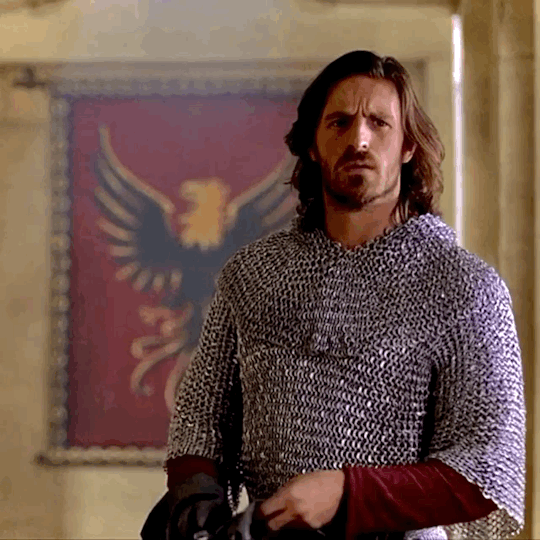
…Or perhaps, more accurately, a pangolin.

#we’re on 24 hour gwaine lockdown#HE LOOKS MESSED TF UP !!!!!!!#bbc merlin#sir gwaine#merlin emrys#merwaine#mergwaine#enchanted!merlin#fomorrah!merlin#murderlin#my gifs
3K notes
·
View notes
Text


bbc merlin - 04x05 His Father's Son
#no potion or magic required#she's already got me enchanted#that sounds like a lyric#out here waxing poem abt her#as i shoud#merlin rewatch#bbc merlin#04x05#morgana#s4
512 notes
·
View notes
Text

#fantasy#nature#beautiful#dream#amazing#forest#fairytale#enchanted#lake#excalibur#merlin#king arthur#lady of the lake
162 notes
·
View notes
Text
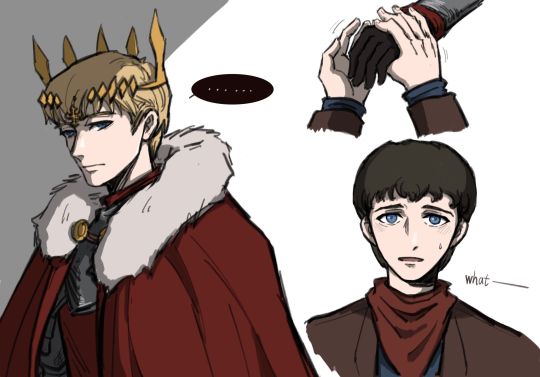

Dark Arthur Ⅱ
(A bit of anxiety here, but we all know that even dark Arthur really wouldn't harm Merlin,it just looks a bit scary:P)
#Merlin was actually enchanted when he saw Arthur's face up close🥰#Still apologizing for my terrible translator#merthur#bbc merlin#merlin fanart#arthur x merlin#merlin x arthur
108 notes
·
View notes
Text
Arthurian myth: Merlin (2)
A continuation of the loose translation of the "Merlin" article by Yves Vadé for the "Dictionnaire des Mythes Littéraires".
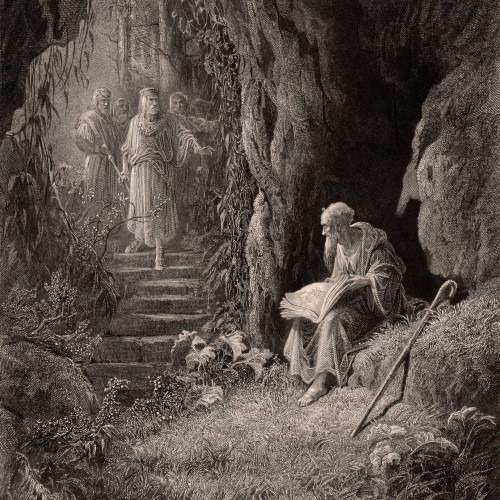
II/ Merlin in the Arthurian literature
As early as 1155, the Normand writer Wace transposed, for Alienor of Aquitaine, the “Historia Regum Britanniae” in French verse, in his “Roman de Brut”. He adds to the work the episode of the creation of the Round Table by Arthur, of whom Merlin will later become the prophet and the agent.
Merlin was barely mentioned by Chrétien de Troyes ; it is with Robert de Boron that he truly became the inspiration of the Grail’s knighthood. His work in verse, that contained at least the three romans known as “Joseph of Arimathea”, “Merlin” and “Perceval”, is partially lost in its original version, and it maybe even was unfinished. However, the prose translation of the “Merlin” was preserved, and seems to be quite faithful to Boron’s poem. The beginning of the roman takes back the motif of Merlin being born of an incubus demon, but it is now placed within a greater theological context: the demons wishes to produce an Antichrist, born of a virgin just like the Christ, in order to counter the Holy Incarnation. A demon managed, after some difficulties, to trick an honest young girl, but she immediately confessed her sin and she had the child baptized. From his father, the devil, Merlin received the knowledge of the entire past; and to counter this gift, God gave him the power to know the future. As such, Merlin is born with an universal knowledge. He uses it in the first months of his life to save his mother, threatened with burning at the stake ; then, at seven years old, he reveals to the usurper Vertigier the existence of the two dragons hidden under the foundations of his tower. He also reveals their meaning: the red dragon (Vertigier) will be killed by the white dragon (the young princes Pendragon and Uter, sons of the king Constant). Uter became king, and Merlin his advisor. He allows him to vanquish the Saxon during the battle of Salisbury, battle where Pendragon loses his life: Merlin had Stonehenge built in his memory, and Uter ruled under the name of Uterpendragon. A new element that would change the Merlin legend forever: it is through the idea and advice of Merlin that Uterpendragon has the Table of the Grail built, the “third table” after the one of Joseph of Arimathea, which itself was a copy of the table of the Last Supper. And, just like within Geoffroy’s work, it is thanks to Merlin that Uter can give birth to Arthur by uniting himself with the duchess Ygerne, that he marries soon after. Merlin raises Arthur in secret then he ensures his crowning and his rule. Merlin will keep assisting Arthur, so that both his kingdom and Christianity could prosper.
Visibly inspired by, if not written by, Robert de Boron, the “Perceval” of the Modène and Didot manuscripts give to Merlin a peaceful end, though an enigmatic one… After guiding Perceval through his quest, he announces the end of the enchantments within the Grail Castle. Once it is done, Merlin builds himself a home in the woods called “esplumeor” (a word with an unknown meaning). There, he escapes from both the flow of time and the sight of men, but he keeps making prophecies about what God asked him to reveal to humanity.

During the first half of the 13th century, two prose cycles formed themselves in France, each continuing Merlin’s story in a different way.
1) In the “Suite-Vulgate”, included within the greater cycle of the “Lancelot-Graal” or “Vulgate” (1215-1230), Merlin is the military advisor and strategist of Arthur in his battles against the barons that refuse his authority, then in his war against the Saxon, and finally in his feud against the emperor of Rome. Through Merlin, Arthur manages to marry Guenièvre, daughter of the king Laodegan, and he becomes the ruler in charge of the Round Table. But more importantly, it is here that Merlin encounters Viviane, the daughter of a lord named Dionas, at the edge of a fountain in the forest of Brocéliande. Wrapped around the tales of battles is a love story, during which Merlin allows Viviane to take away from him his magical knowledge. In order to keep Merlin all for herself, Viviane ends up capturing him within a “prison of air”, from where the prophet, now invisible, can still make his voice heard.
2) In the “Suite-Huth”, part of a cycle that was wrongly attributed to Robert de Boron, Merlin predicts the birth of Mordret, and the disasters caused by Balaain, the knight with two swords. It is Balaain that shall strike the “harmful blow” that will wound the king Pellehan and turn his kingdom in the “Terre Gaste”. Merlin is here much more involved in the adventures of the wandering knights than before. His role as an enchanter is put forward, as he is depicted commanding the wind, making the depiction of a dragon spit fire, open by magic the doors of a city, and preparing an enchanted bed that will remove from those that sleep within it their memory and their senses. The tale ends by the unfortunate love of Merlin and Viviane, which is a repetition of the love between Diana and Faunus. After bewitching Merlin, Viviane throws him into a vault whose stone cannot be removed. In his grave, Merlin screams one last time – and this last cry of the enchanter becomes the subject of an independent tale known as the “Conte du Brait”.
The first mention of Viviane is older than the “Suite-Vulgate”. She appears in the beginning of the “Lancelot” (or “Proper Lancelot”), under the name of Niniène, and she is depicted as a fairy of Bretagne that raised Lancelot in her wealthy domain hidden under a lake. Merlin appears here under a negative light. While his popularity is attested (it is said he was “so dreaded and so honored” by the people of Britany that all called him a “holy prophet” and common folks even called him a “god”), he is said to be “disloyal” and “deceiving” due to the nature of his father, and his knowledge is one of “perverse science”. The lady of the lake refuses his love out of wisdom, and she manages to trap him in “a cave within the dangerous forest of Darnantes”.
As such the character, that Robert de Boron tried to turn into the prophet of Christian knighthood, does not escape the ambiguity due to his composite origins, and which fits his genealogy, half-devil half-virgin. One can also see in his gift of shapeshifting a manifestation of his unstable personality, and of the contradiction of the several traits that compose him. This Proteus-like nature, certainly a remnant of the powers that were once attributed to the druids, allows Merlin to appear sometimes as a young man, sometimes as an old man, other times as a “woods-man/wild man”, and even as a great “branched stag”, as in the story of Grisandole (part of the “Suite-Vulgate”).

Built of successive additions, the tale of Merlin was reproduced, synthetized and translated, partially or entirely, by all the literatures of Europe until the end of the Middle-Ages. Even before 1250, the “Merlin” of Robert had been translated in the provençal language. The character also appears within numerous French verse romans of the 13th century: in “Fergus” (which places his lair in an isolated mountain), within “Le Chevalier aux Deux Epées”, within the “Roman du Hem”, within “Escanor”, within the “Roman de Silence” (where the Grisandole tale is found), and especially within “Claris et Laris”, which explains Merlin’s solitude by a crime he needs to expiate until his death. In the Prose Tristan (after 1240, Merlin takes care of Tristan, whose mother recently died, and gives him to a preceptor (just like he had done for Arthur in Robert de Boron’s text). Identified as a wizard, he builds a magical boat, the “nef de la joie”, for the king of Northomberlande. Outside of the knight-tales, a fairytale in verse of the beginning of the 12th century, “Du villain qui devient riche et puis pauvre”, also known as the “Dit de Merlin-merlot”, confirms the role among the “folk people” of Merlin as an embodiment of the supernatural.
The one that Dante called the “buon incantatore” was very popular in Italy, especially in relation to the work of Joachim of Flore. Among his apocryphal works there is an “Expositio Sibyllae et Merlini”. The tradition of Merlin as a prophet was enriched by a huge book of “Prophecies”, which mixed political predictions, sermons, and fictional stories. It was written in French between 1276 and 1279 by Venetian, probably a Franciscan. In the beginning of the 14th century, the Florentine Paolino Pieri mixed in his “Storia di Merlini” a tale of Merlin’s youth and the Italian translation of a part of the “Prophecies”. In 1480, Venice saw published six volumes of the “Historia di Merlino”, a great part also made of these prophecies supposedly made by Merlin.
In England, the “Merlin” of Robert and the “Suite-Vulgate” were recapped in a verse work known as “Arthour and Merlin” (1250-1300). Henri Lovelich gave an alternate version of this text in his “Merlin” (1430). A translation in Middle-English of the “Merlin-Vulgate” dates from the middle of the 15th century. Finally, sir Thomas Malory split the “Merlin” of Robert throughout the five first books of his “Morte d’Arthur”. This work, written in the prison of Newgate where Malory spent the last twenty years of his life, was printed in 1485 and constantly republished, and it ensured the fame of Arthur and Merlin within English-speaking countries.
In Germany, “Merlin und Seifrid de Ardemont”, by Albrecht von Scharfenberg (13th century) recaps Robert’s Merlin, with very important modifications (for example Pandragon and Uter are now the sons of Merlin). Other translations appeared in Holland. In Spain, the cycle of the pseudo-Robert de Boron was translated in the 14th century by the brother Juan Vivas, while the “Demanda del Sancto Grial” included a “Baladro del sabio Merlin”, derived from the lost “Brait de Merlin”. A Castilian version appeared at Burgos in 1498, and then another was published in Seville in 1535.
#merlin#merlin the enchanter#arthuriana#arthurian myth#arthurian literature#arthurian legend#medieval literature
26 notes
·
View notes
Text
me to me: girl, don't do it.
me: *imagines an au where the show didn't practically forget about merlin and gwaine's friendship after series 3, and gwaine found out about his magic sometime in series 4, and merlin got to have a friend again who knew everything about him and who he could be his true self with and tell everything to and share sneaky, knowing looks with when he secretly performed magic and—*
me to me: well, now you've done it. enjoy the pain.
#bbc merlin#merlin#gwaine#merlin x gwaine#merwaine#merlin x lancelot#lancelot#mercelot#au#merlin rewatch#text: merlin#my text#i find new reasons to be sad about merlin every day :)#more than halfway through my rewatch of s4 and there's barely any interaction#how could 4x08 have ended without a scene where gwaine apologizes to merlin for mistreating him even though he was enchanted?#if the writers still cared about their friendship they would've included this#also note that i've barely rewatched s5 but i don't think they had much interaction there either
237 notes
·
View notes
Text

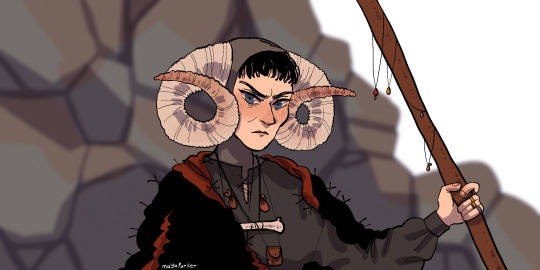
this post by @cursedmerlinedits had me overjoyed but i also really wanted to see merlin as the enchanter... so here we are
[id: two illustrations of characters from bbc merlin as monty python and the holy grail. in the first illustration, arthur is monty python arthur, and merlin is patsy. they are wearing camelot red instead of gold, and they are both grimacing. in the second image, merlin is wearing the costume of tim the enchanter, with ram's horns and a big wooden staff, in front of a rocky backdrop. end id.]
#bbc merlin#monty python#monty python and the holy grail#tim the enchanter#merlin#arthur pendragon#my art
488 notes
·
View notes
Text

how i imagine merlin’s top surgery scars
#i like to think there’s a gender affirming enchantment#merlin#merlin bbc#bbc merlin#merlin revival#trans merlin#trans#top surgery#digital#fanart#art#procreate#human artist#merlin fanart
55 notes
·
View notes